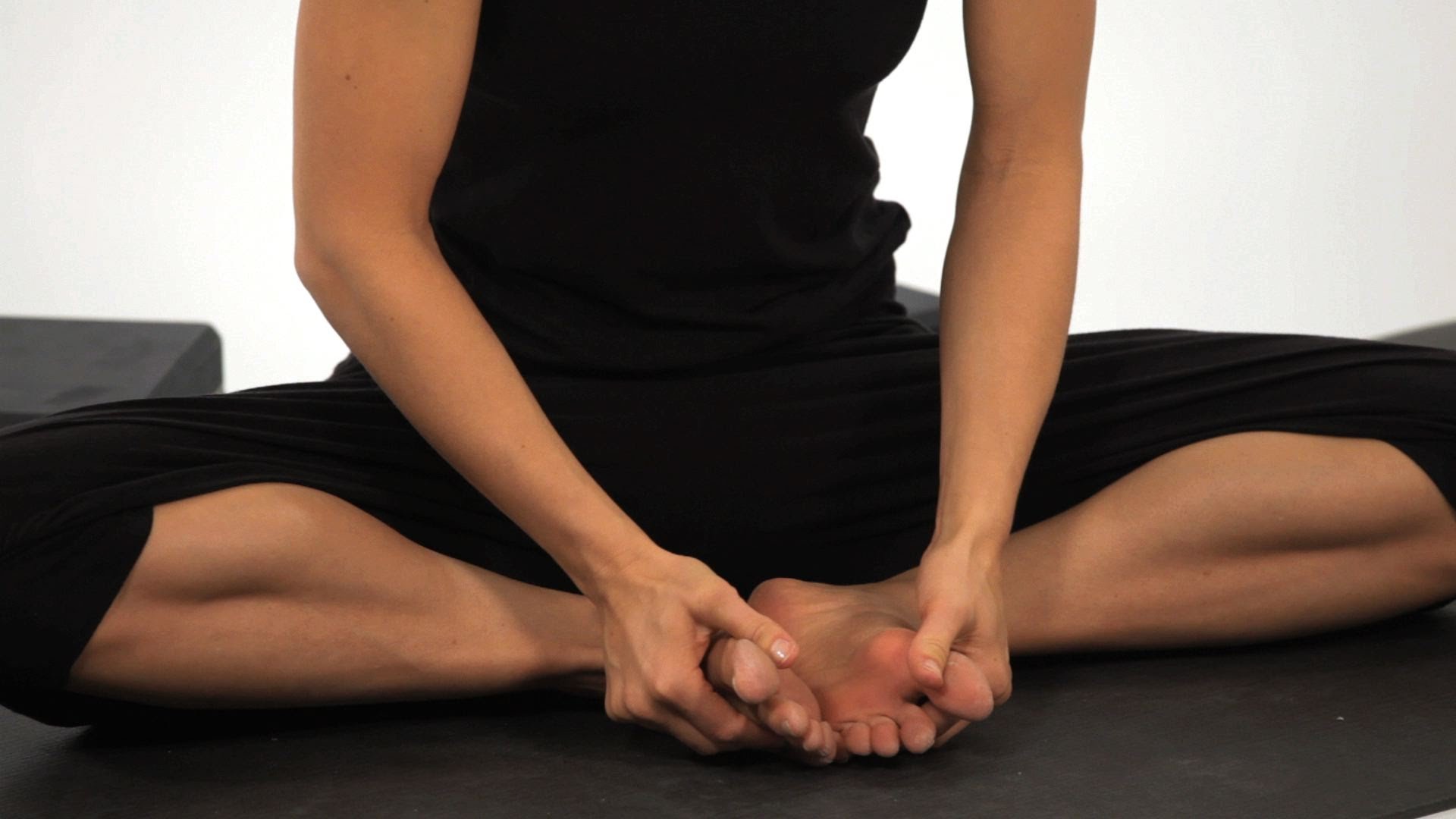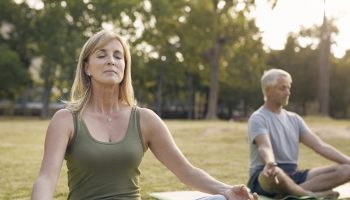The best thing you can do for your knees is to strengthen the surrounding tissues, specifically the inner thighs. Our knees are naturally an unstable place as they sit between a wide joint (the hip) and a tiny joint (the ankle) putting the kneecap at an angle.
To combat and prevent knee pain, you can work on strengthening the interior thighs to align the patella and strengthen the ligaments using yoga postures like the Warrior Poses and Triangle. But the very first thing you will need to do is to realign all your basic postures using these three cues in every pose.
Contents
Best Yoga Poses for Bad Knees
That being said, there are several specific poses that can help provide relief—and a few that can be problematic if practiced incorrectly. That’s why it’s always best to find an experienced teacher you trust and let them guide you. Also be sure to let your teacher know about any injuries or concerns before class, says Steven Cheng, a certified yoga instructor and Greatist expert. Finally, remember: “If a pose doesn’t feel good, causes pain, or gives you a sharp sensation in the patella (kneecap), adjust it or don’t do it,” Miller says.
Chair Pose
Standing with feet and legs together and chest lifted, sit back and down (as if you were sitting in a chair). Keep weight in heels and raise arms up through fingers.
Peaceful Warrior
Step right foot forward with toes pointing straight, left toes turned 90 degrees to the side, arms out and palms facing up. Bend right knee in a lunge. Place back of left hand on left leg and arch back, reaching right arm overhead and toward back wall, gazing toward ceiling.
Bridge Pose
Lie faceup. Bend knees and place feet on the ground shoulder-width apart, arms down at your sides. Squeeze glutes and push through heels to lift body off the ground, resting on just shoulders.
High Lunge
Standing at the front of the mat, step the left foot back in a deep lunge, bending the right leg to about 90 degrees. Raise arms straight up and look forward. If your hamstrings are tight, micro-bend the back leg—this is also less taxing on the knees.
Eagle Pose
In a standing position, bend the knees and wrap the right leg over the left, balancing only on the left foot. Wrap thighs tightly on top of each other with no space in between. You can wrap your arms the same way (right over left), or simplify with hands in prayer position. (Note: If thighs cannot make full contact, leaving some space is OK, but make sure the effort is still toward wrapping one thigh over the other. If you have trouble balancing, use a wall or chair to support.)
Yoga Poses to Stretch The Knees
It’s important to not only strengthen the knees but also to stretch them. You can make knee injuries worse if the muscles are so tight that they decrease movement fluidity. Here are 3 poses that stretch the knees and the supporting muscles without causing pain. Again keep in mind that each person is different and very few injuries are exactly the same, so make sure to seek advice from your physician before beginning.
Wide-Angled Seated Forward Bend (Upavistha Konasana)
Many of the poses that stretch your legs and hips tend to torque the knee in a way that can be quite painful for those who have knee weakness and pain. Konasana is a great pose that will stretch out the whole back of the body as well as the hips, inner thighs, and groin. To get into this pose, straddle your legs out in the widest stance you can comfortably place them.
Easy Pose (Sukhasana)
Lotus is a common pose that that is held at the beginning and end of each yoga class and can be a real pain in the knee. So, instead of sitting with both feet in the crooks of your thighs, simply cross your legs and gently place one in front of the other. Keep in mind that the deeper the bend in the knee the higher the chance of pain, so you may not have a perfect crossed leg look.
Child’s Pose (Balasana)
This is a gentle knee stretch that can be intensified the closer you can move your bottom toward your heels. Props are necessary for those with tight, sore knees. Start on your hands and knees (with a blanket under the knees for protection). In the full, unmodified, pose you’d have your feet together with your toes untucked, knees separated so the belly can rest between the thighs, bottom sitting on the heels, and forehead on the mat with the arms extended out.





